
It takes a plant enthusiast or an art lover to appreciate artist Popo San Pascual’s residence, a mini tropical forest in Tagaytay.
Wild with shady warm-weather trees with underplants of tropical varieties and flowering species, the garden is lush with bamboos, fruit-bearing trees, palms, cycads, orchids, ferns, vines and mosses. Although the separate cabins for sleeping, dining, cooking and painting seem like an afterthought, one can learn from the artist about building on a budget.
The property once belonged to his maternal grandfather Marcos dela Cruz who passed it on to his only child Marina. In turn, she divided it among her four children.
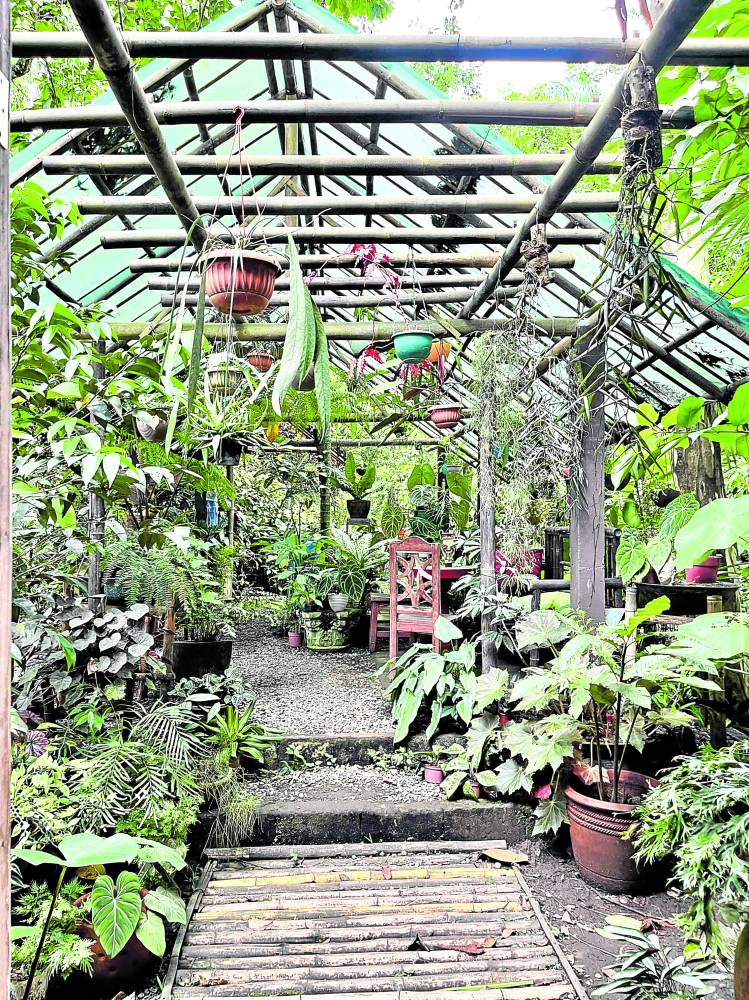
In 1994, the site was filled with pineapple trees and coffee. San Pascual randomly planted various seeds that have grown into a little jungle. The energy of the wildness reflects in the vibrancy and playfulness of his abstractions.
At the entrance, flowering plants are artfully clustered on the wall for both their heart-shaped or veiny leaves. A rare Moonlight Scindapsus is flanked by anthuriums. A pot of licorice plant on a display table invites the visitor to touch its silky leaves and smell the fragrance. The visitors are then led to several quarters whose once bright walls faded over time.
The pathways leading to four different structures are lined with banana and papaya trees and ginger varieties.
DIY construction
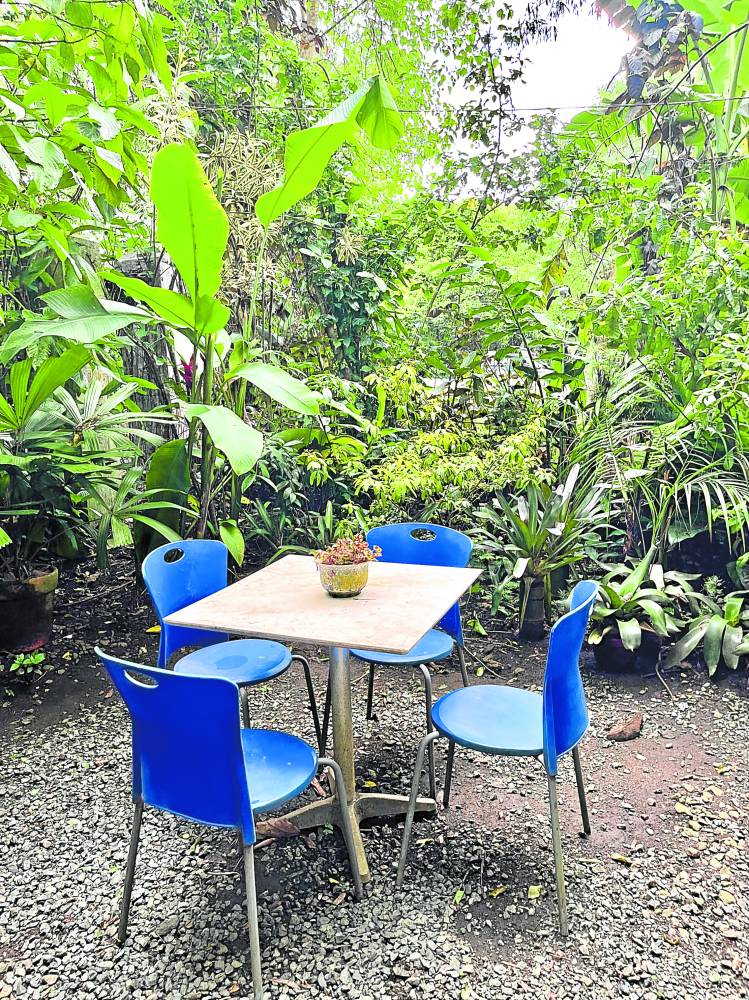
San Pascual’s residence was a DIY affair. A team built the foundations and installed the utilities. The artist and two assistants took over the surface treatments, using tiles and paints from the nearest hardware. The first cabin, the dining and entertainment area, is rustic with a mix of heirloom pieces, antique and wooden chairs, all unified by the patina of aged wood and simple lines.
Most artists who live around the area prefer to get their furniture from the shops on Tagaytay-Calamba Road and surplus stores on Tagaytay-Silang Road.
San Pascual’s collection of indigenous woven baskets are displayed on shelves or dangle from the ceiling. The artist stenciled the kitchen counter for a tile effect. Swags of ethnic fabrics drape the ceiling. An antique enamel chandelier lends textural contrast.
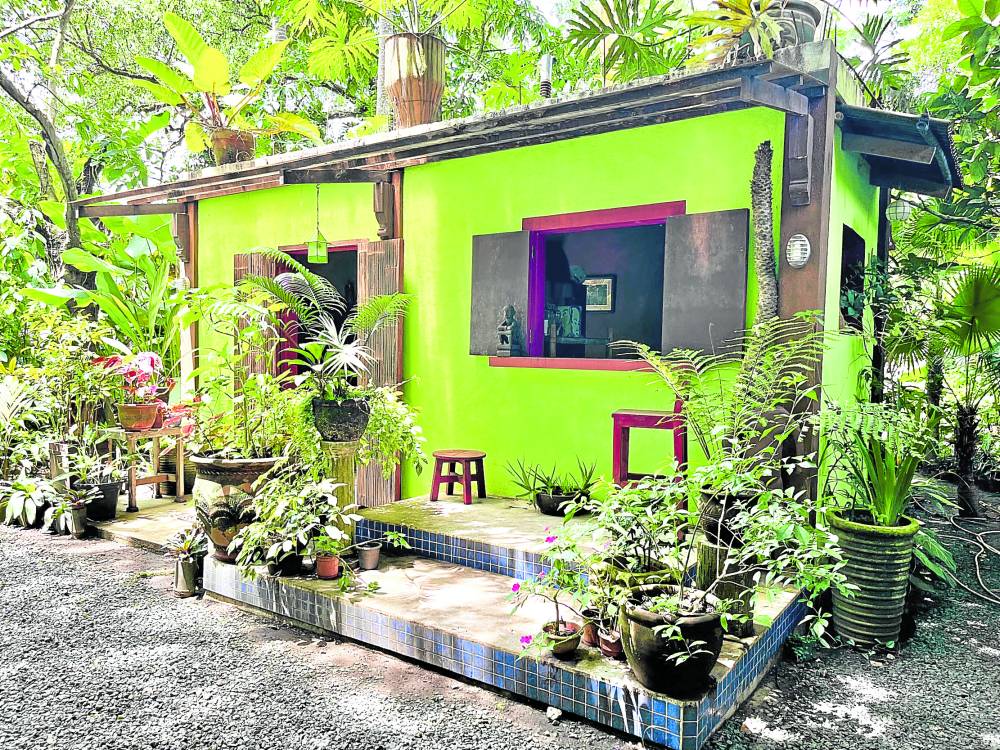
During the pandemic, he built a separate kitchen and painted it chartreuse to beat the quarantine blues. Black bamboos from his garden were made into doors. The surrounding ornamentals such as mahogany ferns, irises, anahaw palms, rattans, touch-me-nots, philodendrons, wonder leaves and sellums help to create a quiet space.
Inside the structure, patterned tiles from a local depot brighten up the floor. Presenting an eclectic décor, the art deco cabinet, which dominates the space, is juxtaposed with a giant Buddha, purchased in a shop along the highway. A plaster of elephant god, Ganesh, was salvaged from a demolition on Dimasalang Street in Manila.
In another location, San Pascual’s bedroom is a loft with a modest wooden bed boxed with greenhouse screens to protect him from mosquitoes.
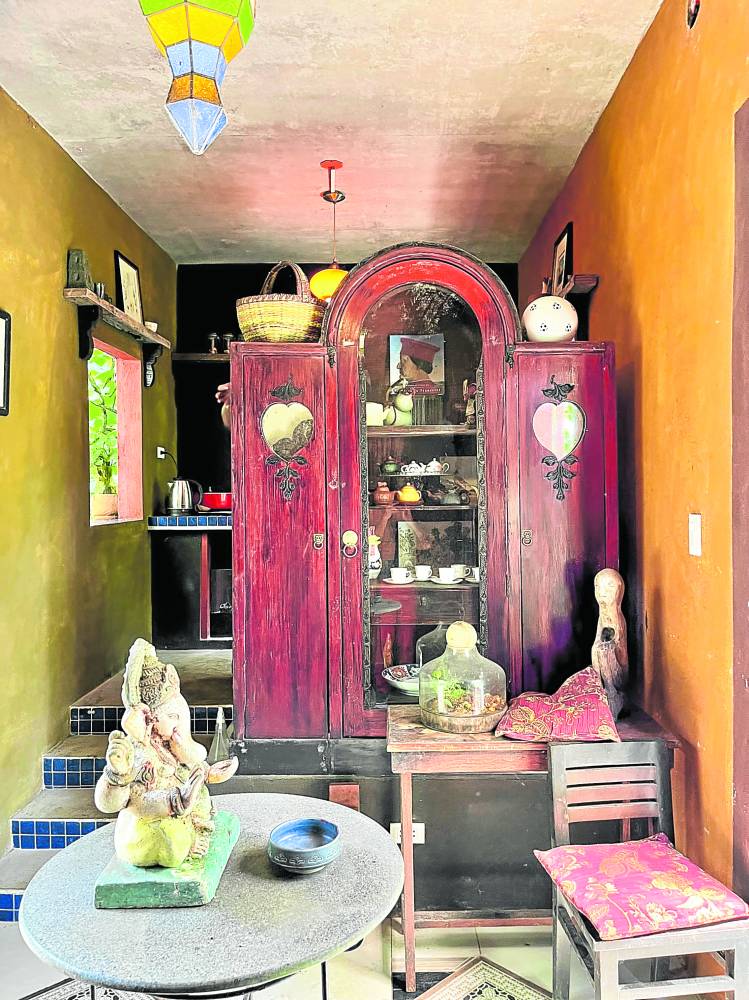
The greenhouse and the studio are the heart of his residence. Built with bamboos from the garden and acrylic sheets for roofing, the greenhouse is a skeleton for a future structure. Nestled among an outburst of ornamentals such as philodendrons, spathyphyllums, euphorbias, yuccas, dracenas and anthuriums, it beckons the visitors with its luxuriance. A trellis, verdant with creepers, and a bamboo pathway lead to the outdoor living room.
“This greenhouse is a study for me. I plan to make this into a real house. I’m playing with proportions but I will build a sturdy roof and walls,” he says.
The greenhouse is decked with rustic furniture and embroidered throw pillows. The only accent piece is a sculpture of a cat which was purchased in Lucban, Quezon.
Studio with rare plants

The artist’s studio is a contrast between cloistered walls for painting and an airy greenhouse for his rare plants and experiments.
The walls are lined with San Pascual’s artworks that present his signature circular discs in pure brilliant colors and strong rhythmic patterns.
A product of the University of the Philippines College of Fine Arts, San Pascual was one of the protégés of the late conceptual art progenitor Roberto Chabet. In 1988, San Pascual was conferred in the Cultural Center of the Philippines Thirteen Artists Awards, a recognition for talented, emerging artists. After college, he mounted display windows at the now-defunct Sari-Sari Store, a trendy local store.
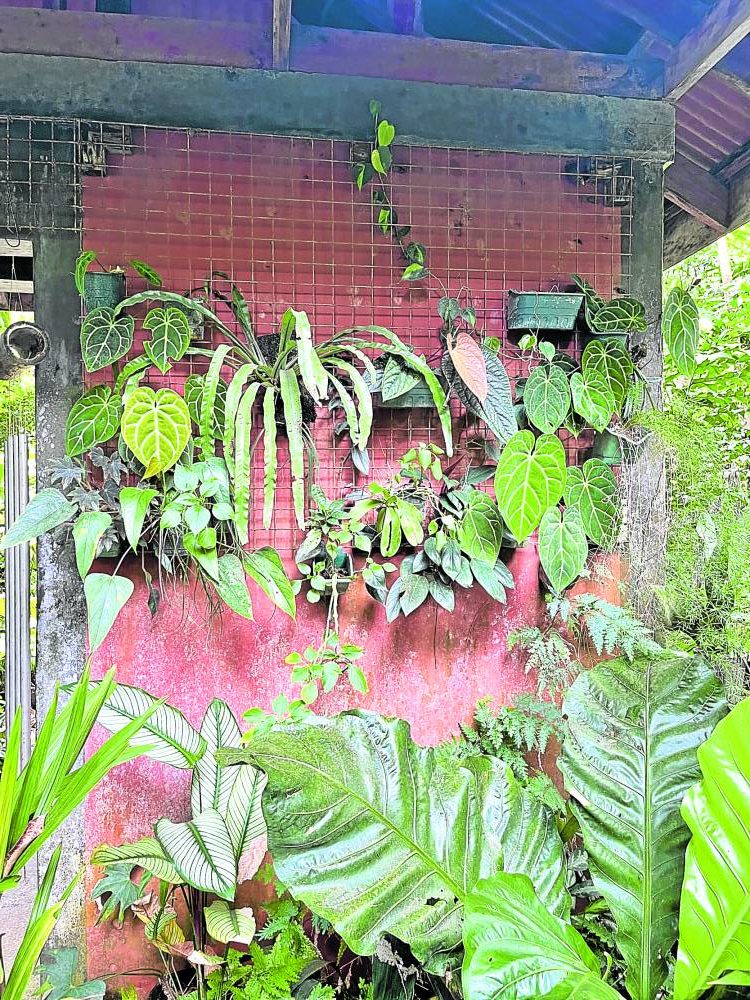
San Pascual was known for his Blue and White paintings, abstractions inspired by Chinese blue-and-white porcelain. He cultivated his trademark style in Paris when he saw the works of Robert and Sonia Delaunay, founders of the Orphism Movement, a style characterized by vivid colors and patterns of geometric shapes that evoke energy.
Although San Pascual is famous for canvasses dotted with faces and prismatic orbs, the studio displays his other range in linear and angular shapes and commissions of realistic religious images. During our visit, he had been working on his signature pieces for his exhibit titled “Contagious” in November at Gallery Ninety in Baguio.
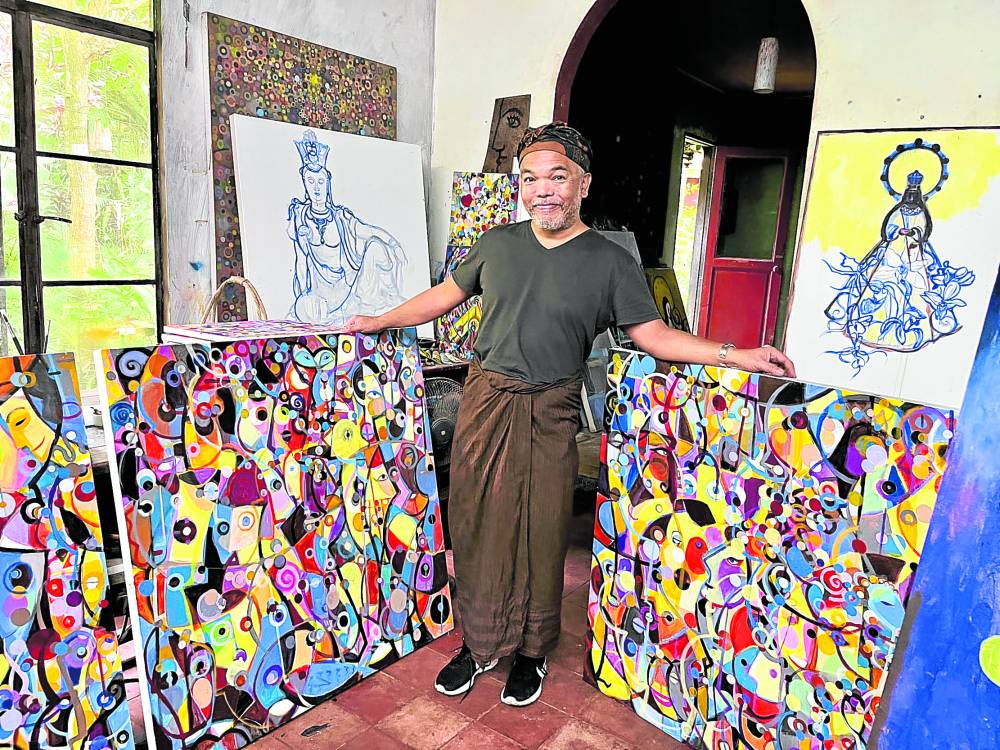
While his studio is dark to let the colors on the canvasses pop up, the adjacent greenhouse is light-filled as sunbeams stream from a wall of salvaged curlicued grills. A corner is dedicated to his collection of rare anthuriums such as the reflexinervium from the slopes of Ecuador, while the rest of the space is littered with succulents, begonias, silvery ladies, stunning aroids, Thai Sunrise philodendron, medicinal perennials from South America and a rare magnificum.
Since the Taal Volcano eruption, he has been dealing with ash fall that corroded the paint finishes of the different houses. During a recent storm, a single lightning bolt struck and knocked down a royal palm and two Madagascar palms.
“I’m thinking of going subterranean,” says San Pascual. —CONTRIBUTED













































